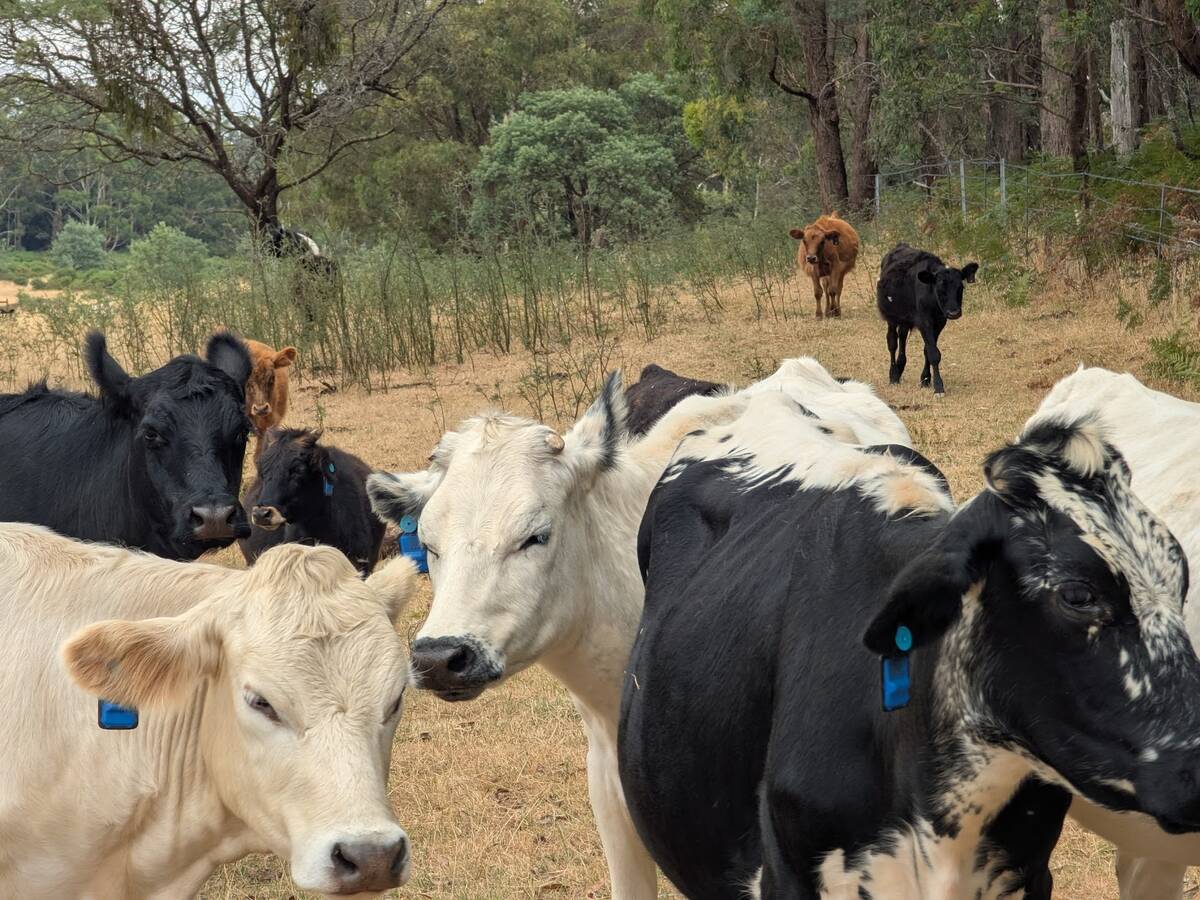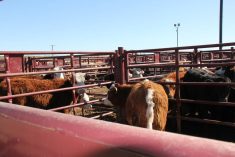The fall run is not just a busy time of year for auction marts. For cow-calf and feedlot producers, fall is a mad dash of buying and selling. At times like this, it becomes hard to remember some key points related to food safety and animal care that become relevant when shipping calves or other cattle.
A shipping record can help (see sample below). The VBP+ Shipping Record template is a single checklist that producers can go through when preparing a load of cattle for shipment. By filling out the document completely, producers can rest assured that they have done their part to ensure high-quality animal care and food safety. Transportation and entry into the food chain are the points where consumers who are not connected to agriculture have the greatest chance to observe what producers do. So, it is important to make sure that what the public sees is Canadian beef producers’ commitment to these principles.

The type of cattle column allows the producer to indicate the general class of cattle being shipped. This column is useful for quick reference when looking back on the record. For example, writing “weaned calves” in this column would help the producer remember that they had completed the shipping record when shipping their calves in the fall after weaning.
[RELATED] Transport rest stops still don’t show a benefit for weaned calves
Read Also

Australian company brings ear-tag tech to Canadian pastures
With Smart Paddock, beef farmers and ranchers can track their cattle through GPS technology
Similarly, the cattle identification column lets a producer narrow down which cattle they are referring to in the record. This specificity ensures that the three important checks in the last columns of the record are associated with the cattle being shipped. This identification can apply to single animals in the case of small loads or refer to groups of cattle using the producer’s own identification systems. The number of head verifies that the number of cattle that end up on the truck matches the number of cattle which were confirmed for safe shipment using the shipping record.
The top of the shipping record includes three important pieces of information. The year helps producers keep shipping records organized over time. Since the document has several rows, most producers can use only one or two of these sheets per year by recording all their loads on one document. The premise ID documents which location the animals were shipped from, helping further identify the load. Finally, while the ranch/producer name might seem obvious to the recorder, this identification helps prove the producer has paid attention to the checks included in the record.
[RELATED] Calving records will be especially valuable in 2022
Recording the destination and trucker adds another pin on the map of where cattle move in their lifetime, helping officials track the source of a problem should one come up. The trucker information is important for this same reason, as well as to have a record of the verification of a safe shipment before transferring care of the livestock from producer to trucker.
The final three columns help prove a producer has been diligent in three key areas.
First, checking off withdrawal check completed shows that the producer has reviewed other records to confirm that the cattle in the shipment are not in a withdrawal period for an animal health product. While checking treatment records for the animals in the shipment is an obvious step, it is also important to think of other records linked to withdrawals, such as documentation of herbicide or pesticide usage. If animals grazed on pasture with a particular chemical, they may be subject to withdrawal for this reason as well. For cow-calf producers, it is important to note that animals may be shipped to a feedlot while still on withdrawal provided the withdrawal information is sent to the feedlot operator along with them. This allows the feedlot operator to assume responsibility for ensuring residues will not end up in carcasses. Similarly, after grazing some pasture sprays, cattle must be held for a certain period before grazing in other areas to prevent damage to the new pasture. This column prompts the producer to either hold animals back before shipping them to a new owner who will put them onto pasture or pass on this information.
The broken needle record check column is like the previous column in that it directs the producer to refer to a different document. The producer checks this box to indicate that they have reviewed records of broken needle occurrences on farm and confirmed that none of the animals in the shipment were involved in a broken needle incident. If cattle have broken needles, they should be retained for slaughter for a producer’s own consumption and the processor can be made aware of the location of the broken needle.
[RELATED] Auction marts, cattle groups apprehensive about Transfer of Care requirements
The final column verifies the fit for transport evaluation. This section requires the producer to observe the cattle in the shipment to verify that each animal can be safely transported without risk to animal welfare. In short, an animal is fit for transport if it can be expected to arrive at its destination in good condition. Lameness, injuries and disease are all factors that can classify animals as either compromised, requiring transport with special provisions, or unfit for transport. Unfit animals cannot be transported unless for veterinary diagnosis or care. The National Farm Animal Care Council (NFACC) Code of Practice for the Care and Handling of Beef Cattle contains a decision tree to help producers distinguish between these classes. This resource is also available within the Vulnerable, Distressed and High-Risk Cattle section of the VBP+ Producer Reference Manual, available at verifiedbeef.ca.
Shipping records are key to protecting food safety and meeting animal care standards. The sample record above, as well as a blank template for producer use, can be found under the Producer Resources tab of verifiedbeef.ca.
Emma Cross holds a bachelor of science in agriculture, with a major in animal science, from the University of Saskatchewan. She works for VBP Plus in communications and as the stakeholder engagement social media co-ordinator at the Canadian Cattle Association. She also runs a purebred Hereford operation out of Tofield, Alta.
















